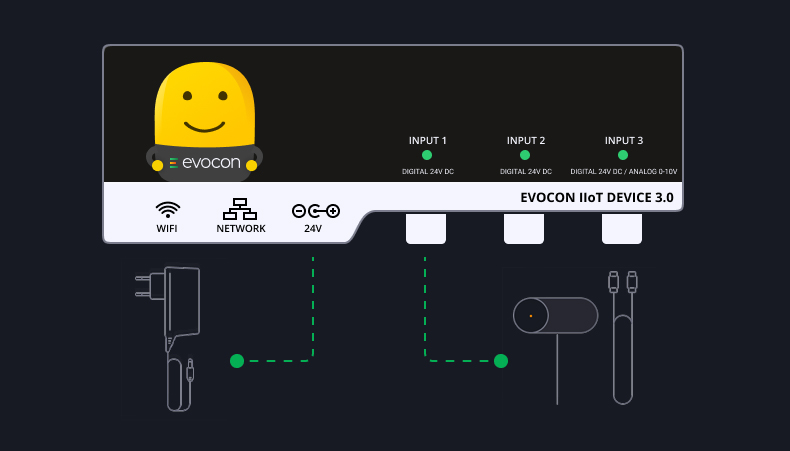When it comes to manufacturing, time is money. The industry is dominated by the need for efficiency, where a few minutes of production delay can have significant financial implications. This brings us to the concept of ‘downtime’—a phase of inactivity or non-production that every manufacturer dreads. But what is the cost of downtime, and how is it calculated? In this article, we’ll delve into these questions and provide you with a comprehensive understanding of the matter, complemented by insights from research papers on the topic.
What is Downtime Cost in Manufacturing?
Downtime, in the manufacturing context, refers to a period during which a machine or production line is unavailable or non-functional, thereby halting production. It can be planned, such as during maintenance or no orders, or unplanned, resulting from unexpected failures or unforeseen organizational issues.
The cost of downtime is the total financial loss a company experiences during these non-productive periods. It’s a significant expense that isn’t just about the direct loss of production. It also includes secondary costs such as labor expenses for idle workers, missed deadlines leading to reputational damage, and even penalties for late delivery.
According to Siemens’ report (published in 2023), the cost of downtime has significantly increased over the past two years (2021-22), with unplanned downtime now costing Fortune Global 500 companies 11% of their yearly turnover, almost $1.5 trillion, up from $864 billion two years ago (2019-20).
More on the report and further statistics later in the article.
Calculating the Cost of Downtime
The formula for calculating downtime cost largely depends on the specific circumstances of each manufacturer. However, a generalized approach can be represented as:
Downtime Cost = Direct Cost + Indirect Cost
Here, direct cost includes factors like lost production value, wasted raw materials, and the cost of repairs. Indirect cost comprises elements like lost sales opportunities, overtime labor costs, and damage to brand reputation. Taking this into account, a more detailed formula would look like this:
Cost of downtime = (Duration of downtime * Cost per minute of downtime) + (Lost revenue due to downtime) + (Cost of overtime) + (Cost of reputational damage)
This is just a simplified example, and the actual cost of downtime will vary depending on the specific circumstances. However, this formula can provide a good starting point for estimating the cost of downtime.
Here are some additional notes about the formula:
- The duration of downtime is typically measured in minutes.
- The cost per minute of downtime is typically estimated based on the cost of lost productivity, lost revenue, and the cost of overtime.
- The lost revenue due to downtime is typically estimated based on the average revenue generated per minute.
- The cost of overtime is typically estimated based on the cost of labor, materials, and equipment used to restore the system to operation.
- The cost of overtime is considered twice – first, the loss of productivity within scheduled hours and then another time for the extra time.
- The cost of reputational damage is typically estimated based on the loss of customer goodwill and the cost of marketing and advertising to repair the damage.
It is important to note that the cost of downtime can be difficult to estimate accurately. However, by using the formula above, you can get a good estimate of the potential cost of downtime and make informed decisions about how to reduce the risk of downtime.
Downtime Tracking Software
Start measuring and managing your downtime with Evocon’s 30 day free trial.
The Cost of Downtime In Numbers
The Siemens research paper to which we referred in the introduction of the article “The True Cost of Downtime 2022” brings out the following key points:
- Unplanned downtime now costs Fortune Global 500 companies 11% of their yearly turnover, which is almost $1.5 trillion. This is up from $864 billion (8% of turnover) two years ago.
- The annual cost of downtime is now $129 million per facility among Fortune Global 500 companies, up 65% on the last survey in 2019-20.
- The cost of a lost hour now ranges from an average of $39 000 to more than $2 million depending on industry (highest in Automotive).
- The cost of an hour’s downtime in an automotive plant is up more than 50% from $1.3 million in 2019–20 to more than $2 million.
- In Oil & Gas, the cost of an hour’s downtime has more than doubled in just two years to almost $500,000.
- The total losses to downtime are also rising sharply. The cost for an average large plant in the sectors surveyed is now $129 million a year, up 65% in just two years.
- Among respondents, the average manufacturing facility suffers 20 monthly downtime incidents – six fewer than two years ago.
What Does the Research Say About Managing Downtime?
In the realm of academic research, the cost of downtime in manufacturing has been a subject of extensive study. Scholars have emphasized the importance of accurate downtime data, with research conducted by Afianto, D. Abdullah, and S. Ardi demonstrating the need for automated downtime recording to improve data precision, thereby enabling more accurate calculations of potential costs associated with downtime.
Optimal maintenance strategies have also been explored as a means to mitigate downtime costs. A study by Igbokwe Nkemakonam and C. Harold proposed a strategy that considers system reliability, equipment failure costs, and the costs associated with preventive and corrective maintenance. This approach underscores the role of strategic maintenance planning in reducing the financial impact of downtime.
The relationship between machine downtime and the warm-up period in manufacturing processes has been another focus area. Research by Erfan Nobil and his team found that incorporating a warm-up phase in the production cycle can minimize maintenance expenses, reduce defective products, and enhance machine performance, thereby indirectly reducing downtime costs.
Furthermore, the advent of smart manufacturing systems has opened new avenues for minimizing downtime. Mustafa Abdallah and his team’s research highlighted the potential of these systems in rapidly detecting and anticipating failures, leading to reduced maintenance costs and minimized machine downtime.
In summary, academic research suggests that the cost of downtime in manufacturing can be effectively managed and reduced through accurate data collection, strategic maintenance planning, process optimization, and the integration of advanced technologies.
However, the specific monetary impact of downtime can vary greatly depending on the specific manufacturing context, underscoring the need for continued research in this area.
Learn more: Step-by-step guide to reduce downtime by 15% in 6 months
How Downtime Impacts Manufacturers
While it’s impossible to eliminate downtime entirely, understanding its costs can help manufacturers take proactive steps to reduce both the incidence and impact of these non-productive periods. Leveraging real-time data can be crucial in achieving this, as outlined in our articles on downtime tracking and analysis, and how to reduce machine downtime. Siemens’ report highlights that firms are turning to Predictive Maintenance strategies, which have proven to cut downtime in half without the downsides of over-maintenance.
In conclusion, the true cost of downtime in manufacturing is a complex issue with far-reaching implications. It’s not just about lost production time; the real price tag includes a variety of direct and indirect costs that can significantly impact a manufacturer’s bottom line. By understanding these costs and taking steps to minimize downtime, manufacturers can safeguard their operations and maintain a competitive edge in this fast-paced industry.
For more insights on manufacturing efficiency, explore related articles on our platform, including the hidden factors of downtime in manufacturing and how to calculate equipment downtime.

